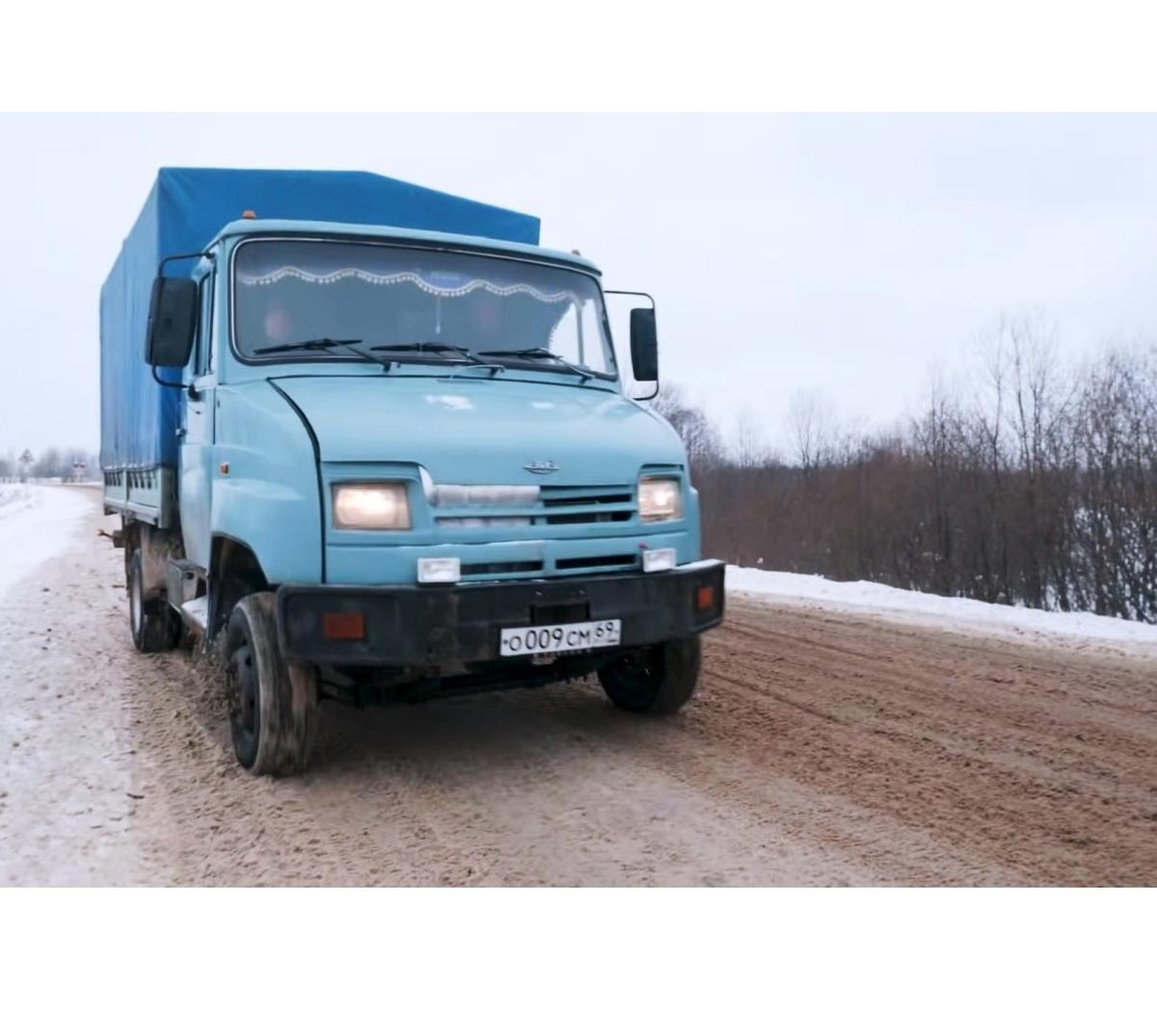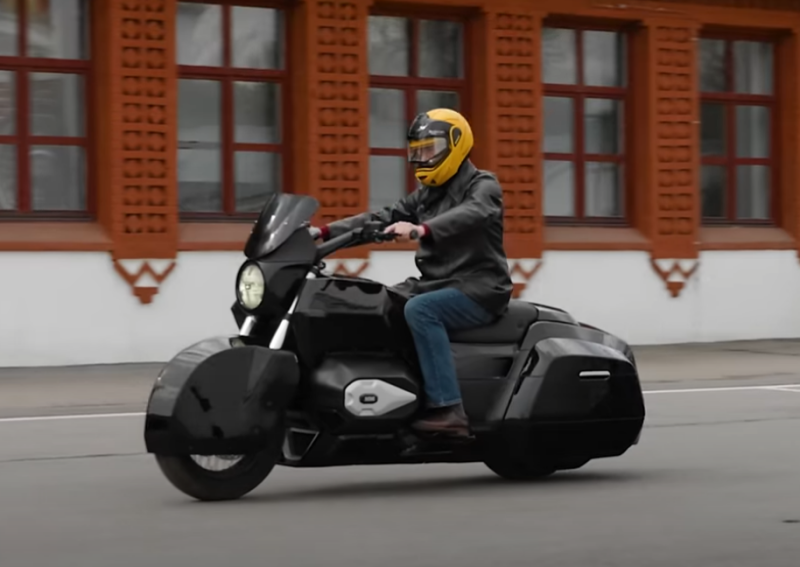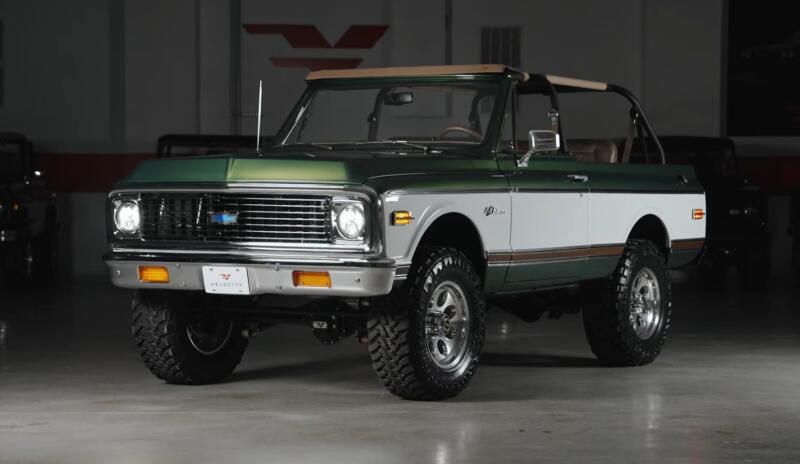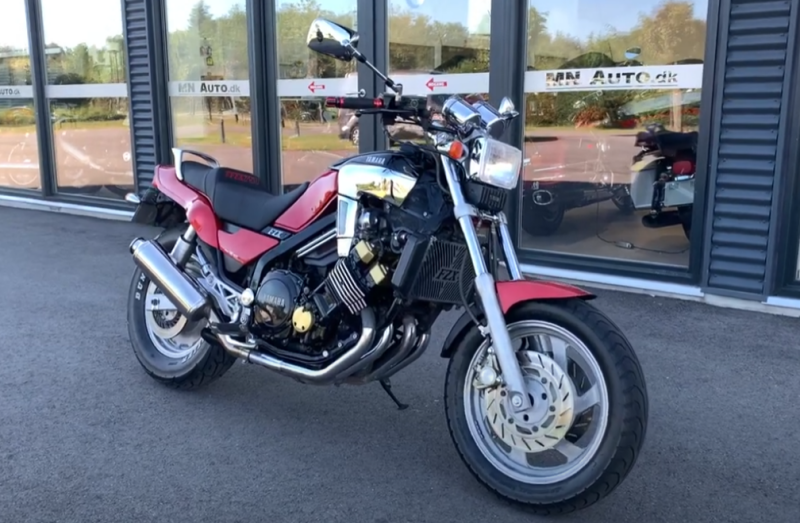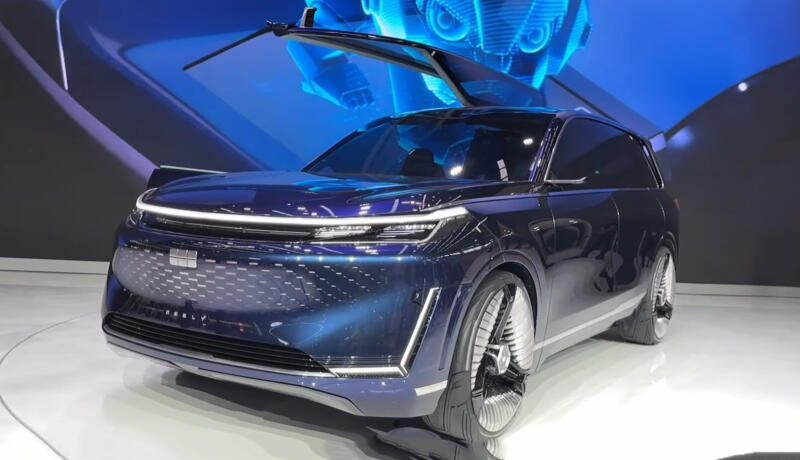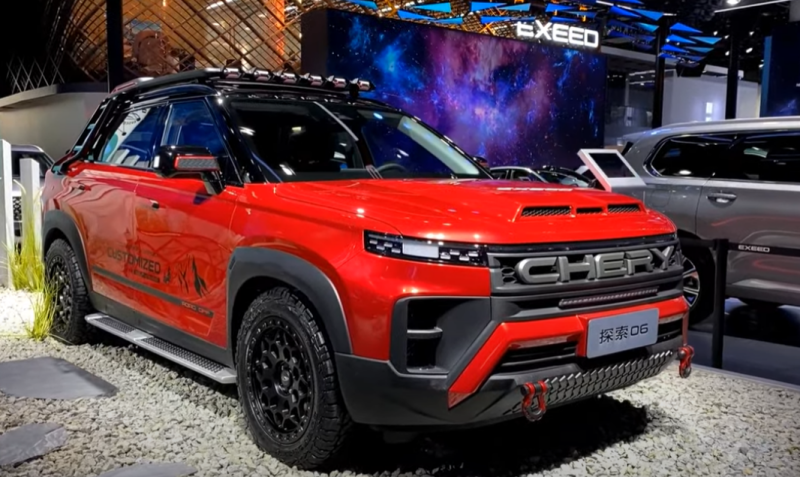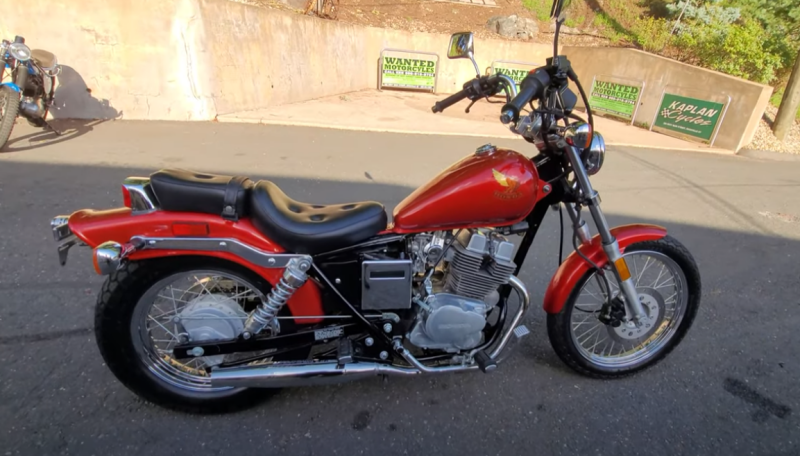The Gorky plant reacted to this situation with the appearance of the Gazelle, and ZIL specialists decided to join the process. When the Union was living its last days, the capital plant began developing a completely new model for itself of a family of light-duty trucks. Already in 1991, a prototype was ready, but 4 long years remained before mass production.
Truck, named "Bull"
The development of the concept of the model put the Zilovsky designers in a difficult position. There were no own developments and ideas in this direction, so I had to resort to foreign experience. As a result, the German Mercedes-Benz T2 became the prototype of the future truck.
 The front hood of the car resembled a bull's head. Photo: youtube.com
The front hood of the car resembled a bull's head. Photo: youtube.comOf course, it was not without alterations and adjustments, taking into account the peculiarities of production, the emerging market and, of course, the quality of Russian roads. Experts unanimously declared that the resulting prototype with the ZIL-3301M index could by no means be called a copy of a German truck. This did honor to domestic designers, but added local “sores” to the car. Work on minimizing them lasted several years, so the first experimental batch left the factory only in 1995. As a result, the new car received a maximum of components from its predecessors:
✅ cabin - from "4331"
✅ gearbox - from ZIL-130
✅ other small parts and assemblies
Only by the end of 1994, the factory workers were able to produce the first two experimental 3-ton trucks. Already next year, an experimental batch appeared, consisting of 219 cars. In their production, a chassis from a German truck was used. The power unit was also from Mercedes. A 4-liter turbocharged diesel developed 115 hp. With.
Outwardly, they differed from the mass-produced cars that followed them by a higher location of the headlights. Around the same period, the car received its final name - ZIL-5301.
The digital designation clearly did not meet the requirements of GOST, therefore, most likely, it appeared due to our usual sloppiness. They made a mistake in one figure, and then waved their hand - and so it will do.
An interesting story has developed with the original name of the model. Officially unconfirmed data suggests that it was the then mayor of the capital, Yuri Luzhkov, who came up with a sonorous name for the new truck - “Bychok”. However, the shape of the cab gave the car a "common" look. Yes, and if the "younger sister" could be a "Gazelle", why does the ZIL-5301, which has a large carrying capacity, not get the name of a larger animal.
Mass production and many modifications
The following year, 1348 Bychkovs were already manufactured, and since 1997 they developed a special modular body structure and the first modifications appeared. They were multi-section trucks with letter additions to the index "NS", "SS" and "EC". They had useful volumes from 10,5 to 20,5 cubic meters. m., depending on the number of sections.
 Various body designs were installed on the chassis. Photo: youtube.com
Various body designs were installed on the chassis. Photo: youtube.comIn the 90s, "Bull" gained extreme popularity and demand. This led to many modifications based on the basic "5301" model:
✅ cargo-passenger vans
✅ reanimobiles
✅ fire trucks
✅ cargo vans
✅ flatbed trucks
✅ all-metal vans
✅ trucks with double cab or sleeper
✅ buses
The last from this list were the ZIL-3250, which appeared in 1998. They were produced in two versions: for 15 or 19 seats. Depending on the capacity, they had a different base - 3650/4505 mm. Experts differed in their opinions about this model, but the only thing they agree on is its originality. It was a classic small bonnet bus with a 4x2 wheel arrangement and stabilizers for both suspensions. It was used not only for intracity routes, but also for suburban traffic.
 Under the hood of the Bull. Photo: youtube.com
Under the hood of the Bull. Photo: youtube.comThe cargo-and-passenger version also turned out to be interesting. With a reduced volume of the cargo compartment (in the basic modification - 5,5 cubic meters), it had a 6-seater passenger cabin. This modification gained strong popularity in rural areas, where the constant need to transport various goods was added to large families. They were also used by all kinds of emergency services. For example, in the mid-15s, the capital's water utility purchased 5301 ZIL-2AXNUMX vehicles.
Peak production and design issues
Until the end of the 90s, a small truck, due to the lack of obvious competitors on the Russian market, was in very high demand. For example, at the beginning of the millennium, more than half of the models of the ZIL plant were precisely “Bull-calves” (56%). In numerical terms, this is approximately 12,3 thousand trucks per year. This favorable picture for manufacturers persisted despite constant complaints from users. Most of the complaints were caused by the not entirely successful design and the build quality of some components, which left much to be desired.
 In small towns, he was in great demand. Photo: youtube.com
In small towns, he was in great demand. Photo: youtube.comOne thing was clear, that "Bull" will be in high demand until some alternative appears. In the middle of the decade, competitors such as the Valdai produced by the Gorky Plant and some Chinese small-tonnage models appeared. Nevertheless, the creators of the "Bull" were careless and enjoyed its relevance, practically without improving the model and eliminating the weaknesses that consumers paid attention to, and there were a lot of them:
✅ low noise and heat insulation of the cab
✅ fragility of the cabin heater
✅ inefficient high beam
Against this background, there were positive moments. Particular praise was given to the design and material of the driver's seat. It was not only comfortable and soft, but also adjustable. And the upholstery material was durable and resistant to dirt.
There were also complaints about the power unit. The car was equipped with a diesel engine from the MMZ-D-245 tractor. The motor was turbocharged and slightly modified for operation at high speeds. It was used because at that time nothing better was at hand. As a result, the temporary became permanent. So a 7-ton machine with a carrying capacity of 3 tons (subsequently increased to 4 tons) had a 4-cylinder engine with a working volume of 4,75 cubic meters. cm, with a capacity of 109 liters. With. True, after many upgrades and efforts to bring the engine parameters to Euro-3 standards, its power increased to 136 hp. With. The passport maximum speed was 95 km/h.
Decline in production and discontinuation
The mid-2000s was the beginning of the decline in the popularity of this truck model. They tried to save the situation with a non-standard solution. In Jelgava, Latvia, it was planned to open the production of new, with a modified design, "Bychkov", intended for sale in the markets of Eastern Europe. In addition to the load capacity increased to 4,5 tons, the car had to receive some imported components: a Cummins engine and a gearbox from ZF. The implementation of the project was hindered by the financial difficulties of the enterprise and a markedly reduced interest in its products.
 Today's enthusiasts have given the "Bull" a presentable look. Photo: youtube.com
Today's enthusiasts have given the "Bull" a presentable look. Photo: youtube.comThey tried hard to save the situation, the development of an improved version of the car, the ZIL-4362 Tapir, appeared. But, time worked against the "Zilovites" and the matter never came to mass production. The main ZIL conveyor stopped in 2010. At the end of the next year, the production of "Bull" was transferred to the Saratov region, but this only brought the end time closer. The release lasted three years in small batches, and in 2014 production was finally stopped.
